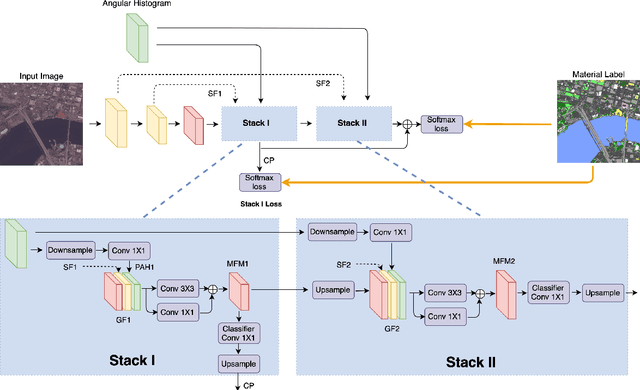Angular Luminance for Material Segmentation
Paper and Code
Sep 22, 2020



Moving cameras provide multiple intensity measurements per pixel, yet often semantic segmentation, material recognition, and object recognition do not utilize this information. With basic alignment over several frames of a moving camera sequence, a distribution of intensities over multiple angles is obtained. It is well known from prior work that luminance histograms and the statistics of natural images provide a strong material recognition cue. We utilize per-pixel {\it angular luminance distributions} as a key feature in discriminating the material of the surface. The angle-space sampling in a multiview satellite image sequence is an unstructured sampling of the underlying reflectance function of the material. For real-world materials there is significant intra-class variation that can be managed by building a angular luminance network (AngLNet). This network combines angular reflectance cues from multiple images with spatial cues as input to fully convolutional networks for material segmentation. We demonstrate the increased performance of AngLNet over prior state-of-the-art in material segmentation from satellite imagery.
 Add to Chrome
Add to Chrome Add to Firefox
Add to Firefox Add to Edge
Add to Edge